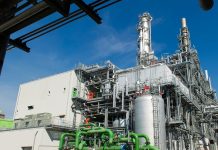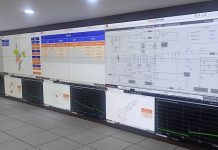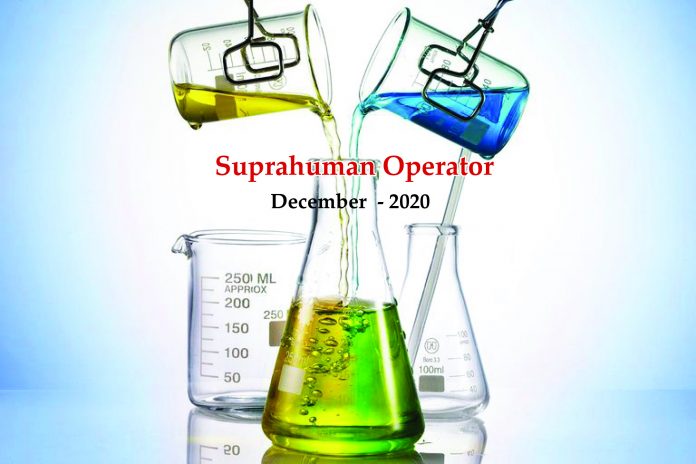This month’s column examines how robots are being deployed in the chemical industry to ensure the health and safety of their workers. Robots not only eliminate exposure to hazardous situations but also deliver superior performance in tasks like inspection, cleaning, leak detection, and surveillance. The pandemic may have hastened the adoption of robotics, but the industry should wake up to the threat of job losses.
Robots are getting deployed increasingly in the chemical industry to perform a wide range of chores. They are used to enter confined spaces even when they are hot and filled with hazardous material. They are used for inspection and imaging in difficult to access areas. They are used for heavy-duty cleaning in highly toxic and corrosive environments. They are used for detecting leaks in harsh environments. They are used for patrolling difficult terrains. They are used to take the boredom out of routine and repetitive tasks. Robots can go where humans cannot. The chemical industry has started to exploit this suprahuman ability of robots to carry out difficult operations in unsafe conditions at a fraction of cost
and time. This also reduces plant downtime and prevents exposing plant personnel to unsafe and hazardous working conditions.
Catalyst Unloading
Robots have been developed to remotely remove catalysts and adsorbents from vessels in the chemical process industry. Catalysts are widely used in refineries and petrochemical units. Catalysts have a fixed life and need to be periodically replaced. As per one estimate, the industry spends 10,000 hours annually to unload catalysts. Many catalysts are pyrophoric and ignite easily when brought in contact with air. The conventional method of unloading is to send an operator inside the vessel to vacuum-up the catalyst using a hose. Since an inert atmosphere has to be maintained inside the vessel, the operator carries a breathing air apparatus along with him. Manoeuvring the heavy vacuum hose inside the hot confined space of a vessel, while wearing a protective suit and breathing apparatus is a challenge for the operator. Quite a few process safety incidents have been reported, some of them fatal.
An Australian-American company has developed a robotic catalyst unloading system. The device sits atop the catalyst bed and can be manipulated by the operator using a joystick and video camera. The robot has made catalyst unloading from fixed beds faster and safer by eliminating the need for an operator to enter a confined space under inert conditions.
Inspection
Robots are being used increasingly for inspection in the chemical process industry, as they offer significant benefits. Robots can have any form factor and thus go where humans cannot reach. They can crawl up tall stacks and columns even while they are in operation. They can be deployed for inspection in remote locations with harsh environments. For example – gas pipelines and valve stations. They can be equipped with sensors and cameras which can beam out information to experts located thousands of kilometres away.
Robots can be programmed to carry out repeated inspections continuously, thereby eliminating the inconsistencies arising from having multiple sets of human inspectors. Condition monitoring of assets that require inspection at specified intervals is best done by robots, as this will do away with human bias. Robots can stay anchored at a point for a long and this allows for multiple inspections and their comparison over a spread of time. Inspection robots will continue to improve with advances in sensor technology, motion control, and machine intelligence. An early column in this series (Eye in the Sky, February 2017) discussed how drones are being deployed for high-quality inspection. Robotic inspections are safer, faster, and are more precise.
Cleaning
Robots are revolutionising cleaning operations in the chemical industry. Robots needed mere 2 weeks to clean up a storage tank, a task that took 2 months for a human crew. The robots used remotely operated hydraulic jets to cut through the sludge and deposits built up on the tank floor and walls. Robots used lances that were far too heavier for humans to handle. The jet pressure was more intense and the toxic debris that were blasted out of the tank surface had no impact on the robots. Not only was the cleaning accomplished in a much shorter time, but it also consumed much less water and cleaning chemicals. Also, the debris and effluent were vacuumed out and discharged in a more environment- friendly manner. The robots did not have to wear elaborate PPE, nor did they require extensive training. Also, the robots did not require exiting the confined space of the tank every shift and cleaning themselves up.
Leak Detection
Gas leaks can happen in many industrial facilities and it is important to spot them early to protect people and assets. Fixed gas sensors can detect a leak but cannot precisely pinpoint the source. They also suffer due to the vagaries of the wind. A large number
of detectors would have to be spread over the geographical area to catch all leaks. A robotic gas leak detector solves all these problems. Fitted with smart sensors it prowls around the facility and can detect gas leaks soon after its onset. Robotic leak detectors are perfectly suited for cross-country gas pipelines that traverse through difficult terrain. Various kinds of sensors using multiple measurement principles have been fitted on the roving robots. Once they detect a leak, they will communicate their whereabouts wirelessly to the central control room. This obviates the need for human patrolling under harsh weather conditions.
Surveillance
Another area where robots have started to make inroads is in the surveillance and security of the perimeter of industrial facilities. Watchtowers with guards and cameras are giving way to patrolling robots. Robots are present 24×7 without getting exhausted or distracted and their unflagging attention to the task can never be matched by humans. Surveillance robots are equipped with thermal cameras and LIDAR and programmed to distinguish suspicious objects.
Epilogue
The COVID-19 pandemic has raised the general awareness of health and safety among people. In the post-pandemic world, businesses will be mandated to do more to ensure the physical and emotional wellbeing of their employees and robotics are likely to play an ever-increasing role in this.
Robots eliminate or limit exposure of the workforce to hazardous situations. Robotised operations are also efficient. They perform faster and their performance is distinctly superior to humans in operations like cleaning, inspection, surveillance, leak detection, etc. But robots have a serious flip side; they are taking away jobs. Experts predict that 20 million manufacturing jobs will be lost to robots by 2030.
Readers’ responses may be sent to:
k.sahasranaman@gmail.com or
chemindigest@gmail.com































